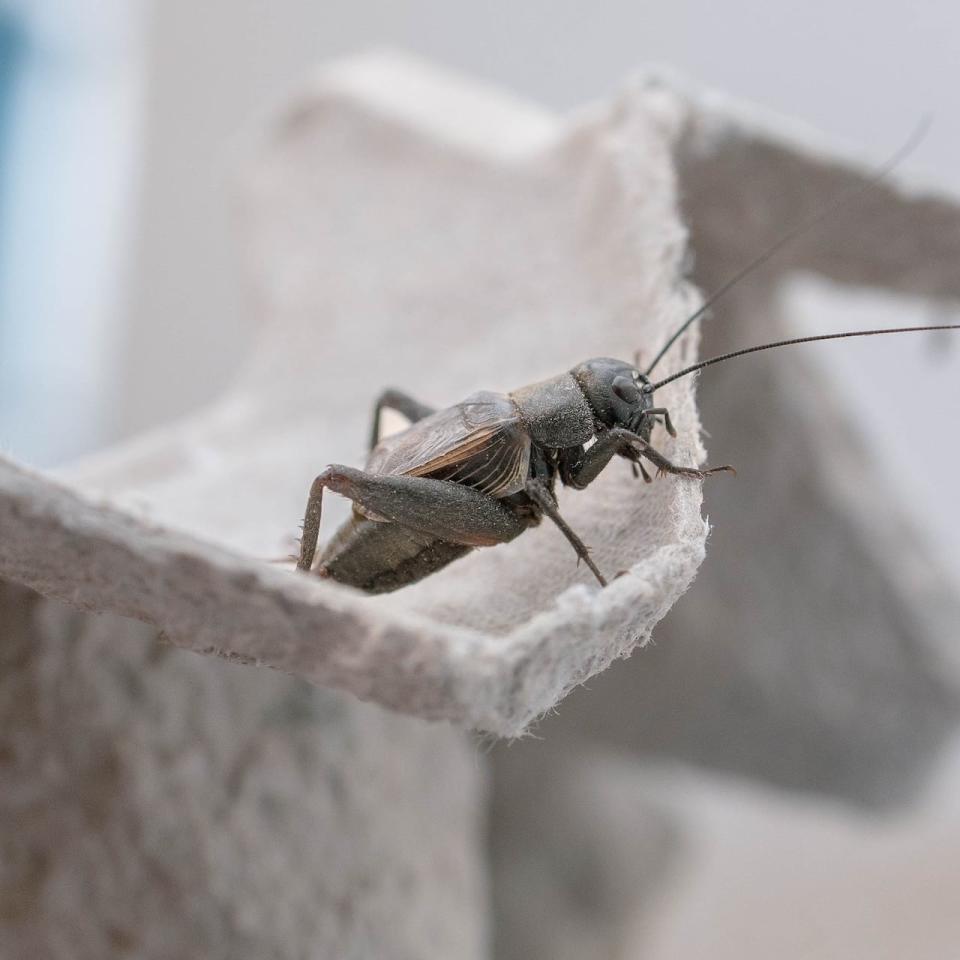Can crickets become space food? These Carleton researchers want to find out

A Carleton University research team is taking one big step for cricket-kind — testing how the insects respond to microgravity to see if they can be nutritious space food.
According to Sophie Kasdorf, a mission specialist with Team Insecta, crickets could be suitable for space travel because they can be raised in a small space with limited resources.
"They can live in pretty dense environments, like a couple flats of cardboard," Kasdorf told CBC Radio's All In A Day.
The team is sending crickets at different life stages on Canada's Falcon 20 aircraft, which will fly in parabolas to simulate microgravity. They'll be held in a secure case that's regulated for temperature.
Kasdorf said the team is looking at "several different factors" from the flight, notably whether the crickets survive and if their age affects their likelihood of making it back alive.

The Gryllus pennsylvanicus, otherwise known as the fall field cricket. (Submitted by Emily McColville)
"There hasn't been a ton of research on crickets or even insects in general in space so far," Kasdorf said.
Not only that, but the team also wants to understand whether the trip will affect the crickets' growth.
"If we have a juvenile cricket, we measure its weight before it goes up, and then we measure it periodically over the next few weeks to see whether it's smaller than crickets that weren't sent on that plane," Kasdorf said.
Emily McColville, co-lead of Team Insecta, told All in a Day that microgravity is known to cause immune and endocrine "disregulation" in astronauts and other insects like fruit flies.
"So that's why we're looking to see how much of this transfers to crickets and what the future is, because it's such a novel field," McColville said.
How do crickets taste?
When it comes to actually eating crickets, Kasdorf said the taste is "a little bit earthy and a little bit nutty, almost."
"When they're mixed into other things — we've had cricket pancakes before — if it's well done you can't really taste them," she added.
McColville said the team works with industry partners who farm crickets commercially and have made products like roasted crickets or cricket cheese puffs.
"When you grind them into a flour, it kind of diguises [the taste]," McColville said, adding that the resulting product is similar to whey or pea protein powders.
As for actually getting crickets onto a real space flight and convincing astronauts to eat them, there are logistical considerations, McColville said, that will require help from different sectors.
"We're mostly focusing on research and the potential to have crickets in space," McColville said.
"But things like habitation modules and processing, I think, would be something that would need more involvement from industry in the future."

